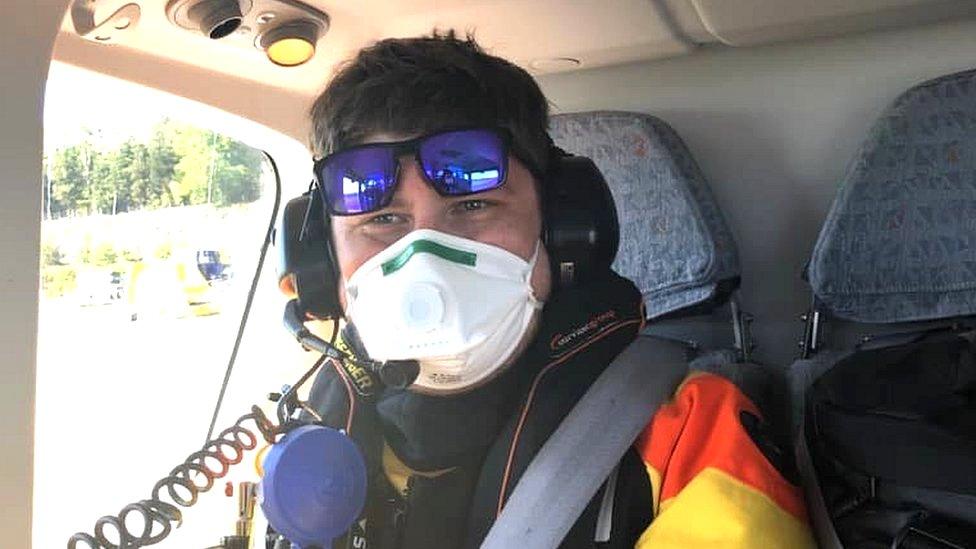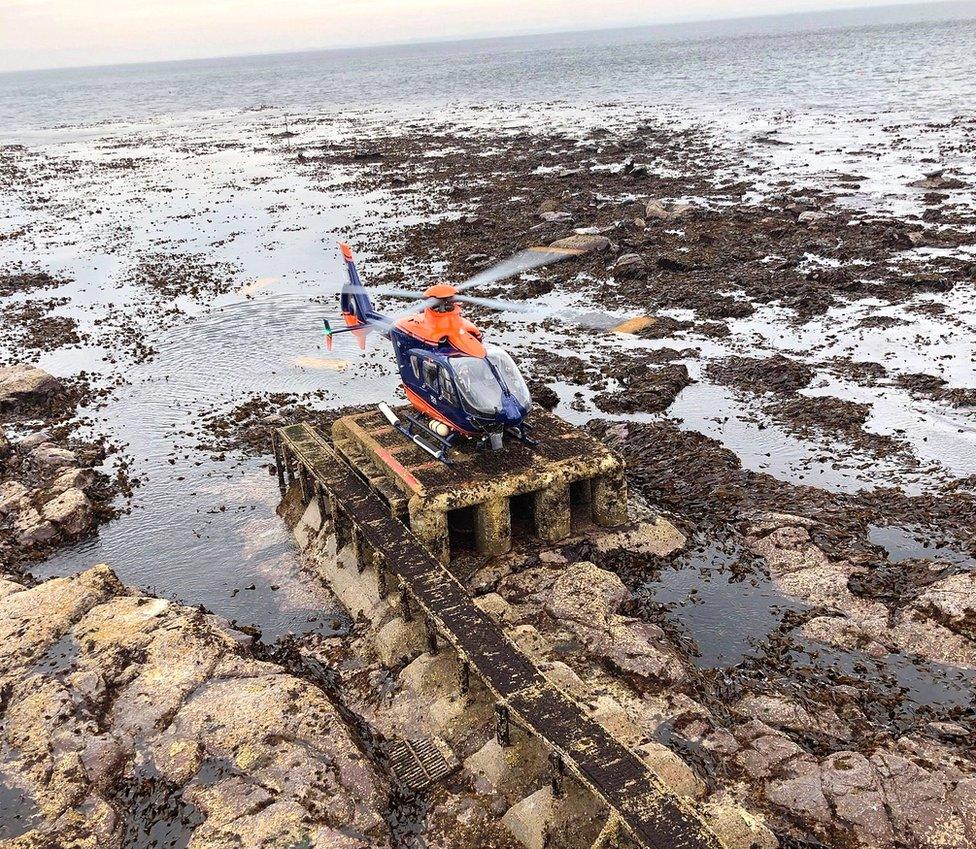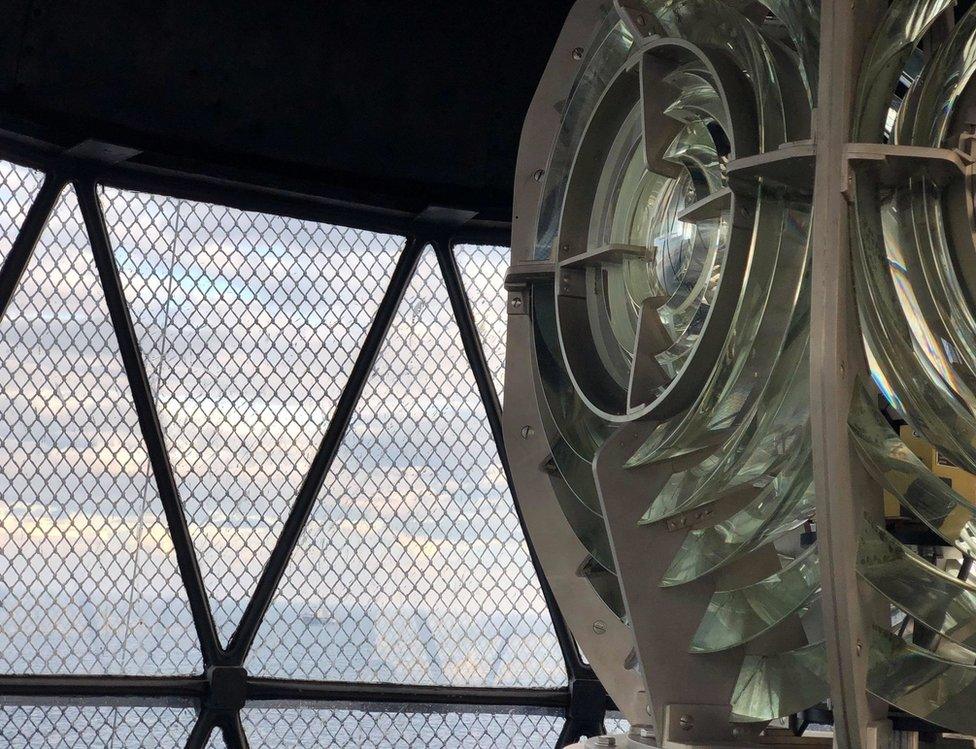Coronavirus: Keeping lighthouses working during the lockdown
- Published

Ross Russell observed strict social distancing restrictions during the trip to the Bell Rock
Lighthouses dotted around the UK's coastline play an essential role in ensuring shipping lanes stay open and trade continues.
But the team of engineers and technicians who look after Scotland's lighthouses have had to adapt and adjust to ensure their important work continues during the lockdown.
Mechanical technician Ross Russell works for the Northern Lighthouse Board.
He is part of three-man team of specialists who have just returned from fixing an electrical fault on the Bell Rock lighthouse, 11 miles (18km) east of the Firth of Tay in the North Sea.
He told BBC Scotland he was proud to play his part in fixing and maintaining the lighthouses so mariners could remain safe at sea.
The 32-year-old, from Oban, said: "I feel great about the work I'm doing out there because of the importance of keeping our shipping lanes open."

Fuel and water being dropped by a helicopter onto the Bell Rock at the weekend with the Pharos in the background
The team has currently stopped doing any routine maintenance and upkeep work, such as painting, and is instead focusing on the essential work required to keep the lights operating.
"Our working practices have changed dramatically, said Ross. "It has been difficult working under the social distancing rules."
For the trip to Bell Rock, each member of the team had to drive to Dundee Airport separately before catching a 30-minute helicopter ride to one of the Northern Lighthouse Board's ships anchored out at sea, called the Pharos.
There are two ships that sail to each of the lighthouses carrying water and fuel for workers. The other ship is the Pole Star.
Ross spent the night on the Pharos before being dropped on the Bell Rock with his colleagues.
He said: "We normally mingle with the ship's crew of about 20 but this time we were kept away from them and given our own isolation deck."
The next day they were flown by helicopter wearing PPE kit and screened off from the pilot.

The helicopter can only land when the tide is low at the Bell Rock lighthouse
He said: "We can only land when the tide is low as the lighthouse is sea washed and therefore the helipad is only exposed when the reef is exposed.
"When the tide turns, the water comes to just below the door at entrance level so once you're on, you're on and that's you stuck there until the tide recedes again.
"There are two bedrooms with three bunk beds on the Bell Rock but because of the new social distancing rules we had to bring a blow up mattress. One of us slept in the kitchen on that and the other two had a bedroom each.
"We also brought all our food and bedding as well."

The light is run from batteries powered by generators
He said the group had to take it in turns to cook their own food in the narrow circular kitchen inside the lighthouse and they each had a different floor inside the 115ft tower.
He said: "Normally the trips fly by because there is so much banter between us but on this trip there was a serious air about it."
The lighthouses are fully automated but run from batteries powered by generators which use fuel.
The team will next make trips to lighthouses on Skerryvore, 12 miles (19km) south-west of the island of Tiree, and Dubh Artach, 18 miles (29 km) west of Colonsay, to refuel them.
Before the lighthouse was built on the Bell Rock there was a bell which would ring out to mariners in the wind.
Lighthouse keepers, who would stay for three months at a time, were no longer needed in the 1990s when they became automated.
Ross said: "There is a note in the Bell Rock lighthouse from the last lighthouse keeper who says 'I'm leaving this rock to it's rightful owners, the seals.'
"I was thinking how right he was when I could hear them barking all night there, they have no comprehension of any pandemic either."

Looking down at the sea from the top of Bell Rock lighthouse